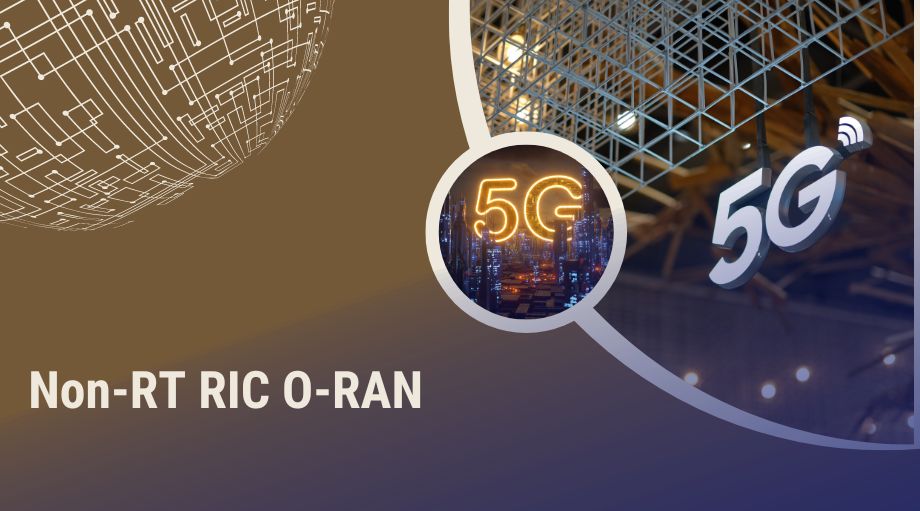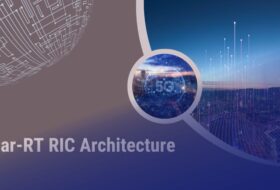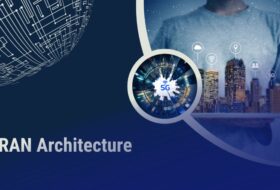What is RIC?
Ran Intelligent Controller
- Near-RT RIC
- Non-RT RIC
In this article, we will discuss Non-RT RIC
Ran Intelligent Controller
- Near-RT RIC
- Non-RT RIC
In this article, we will discuss Non-RT RIC
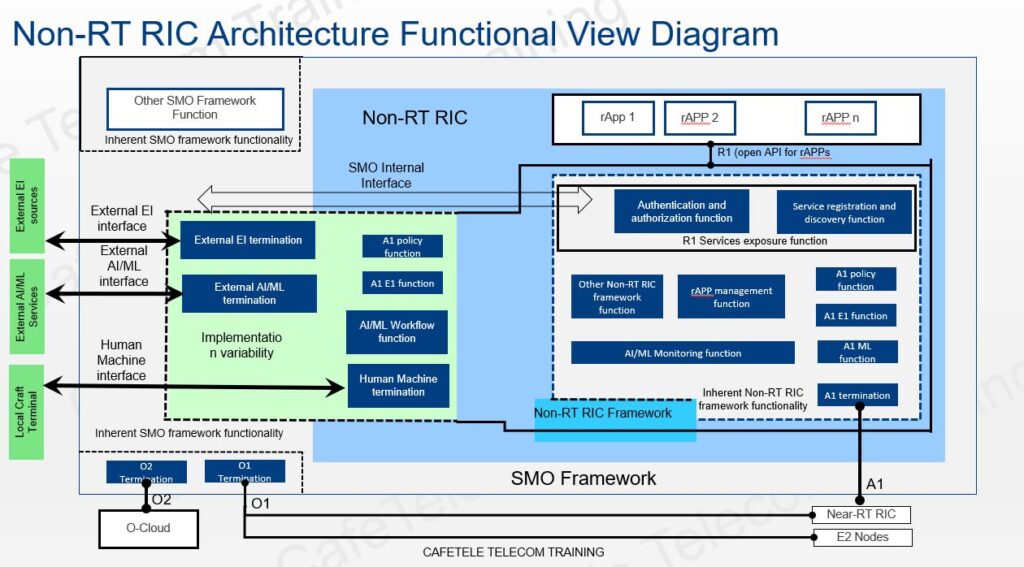
What is Non-RT RIC?
- A Non-RealTime RIC (RAN Intelligent Controller) is an Orchestration and Automation function described by the O-RAN Alliance for non-real-time intelligent management of RAN (Radio Access Network) functions.
- The primary goal of the NON-RT RIC is to support non-real-time radio resource management, higher layer procedure optimization, policy optimization in RAN, and providing guidance, parameters, policies and AI/ML models to support the operation of near-Real Time RIC functions in the RAN to achieve higher-level non-real-time objectives.
Non-RT RIC Architecture functional View diagram
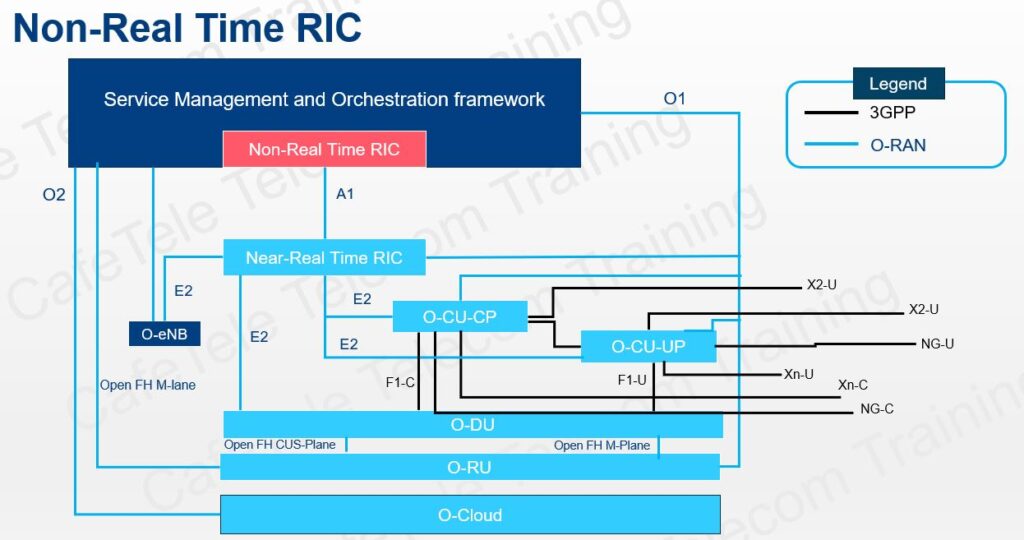
Where NON-RT RIC Located
Let’s understand the basic interface and function in this block diagram:
- Non-RT RIC(O-RAN non-real-time RAN Intelligent Controller): a logical function that enables non-real-time control and optimization of RAN elements and resources, AI/ML workflow including model training and updates, and policy-based guidance of applications/features in
- Near-RT RIC Near-RT RIC (O-RAN near-real-time RAN Intelligent Controller): a logical function that enables near-real-time control and optimization of RAN elements and resources via fine-grained (e.g. UE basis, Cell basis) data collection and actions over E2 interface.
- A1: Interface between Non-RT RIC and Near-RT RIC to enable policy-driven guidance of Near-RT RIC applications/functions, and support AI/ML workflow.
- rApp: An application designed to run on the Non-RT RIC. Such modular application leverages the functionality exposed by the Non-RT RIC to provide added value services relative to intelligent RAN optimization and operation
- O-Cloud: O-Cloud is a cloud computing platform comprising a collection of physical infrastructure nodes that meet O- RAN requirements to host the relevant O-RAN functions (such as Near-RT RIC, O-CU-CP, O-CU-UP, and O-DU), the supporting software components (such as Operating System, Virtual Machine Monitor, Container Runtime, etc.) and the appropriate management and orchestration functions.
Non-RT RIC is an internal function of the SMO framework, The diagram shows three categories of components of Non-RT RIC:
- rApps
- Non-RT RIC framework
- Open APIs for rApps.
rApp is an application designed to run on the Non-RT RIC ,rApps are modular applications that leverage the functionality exposed by the Non-RT RIC to provide added value services relative to intelligent RAN optimization and operation. Examples of such added value services include:
- Providing policy-based guidance and enrichment information across A1 interface.
- Performing data analytics, AI/ML training, and inference for RAN optimization or for the use of other rApps.
- Recommending configuration management actions over O1 interface
Non-RT RIC framework is a collection of Non-RT RIC framework functions , It includes the set of inherentNon-RT RIC framework functions to support A1 interface and rApps, other Non-RT RIC framework functions if any, and “implementation variable” functions which are deployed in Non-RT RIC. Non-RT RIC framework functions provide services to rApps via the open APIs.
- “rApp supporting functions”, e.g, rApp service exposure functions, rApp conflict mitigation, etc.
- A1 functions”, e.g., A1 logical termination, A1-Policy coordination and catalog, A1-EI coordination and catalog, etc.
- “AI/ML Monitoring functions”,
- “AI/ML workflow functions”, e.g., “AI/ML Model Management Functions”, “AI/ML Data Preparation Functions”, “AI/ML Modeling/Training Functions”, “ML Model Repository”. AI/ML workflow functions are implementation variability functions and can be flexibly deployed within Non-RT RIC, outside Non-RT RIC but within SMO, or even outside SMO.
- Other logical terminations, e.g., external EI termination, external AI/ML termination, human-machine termination, etc.

